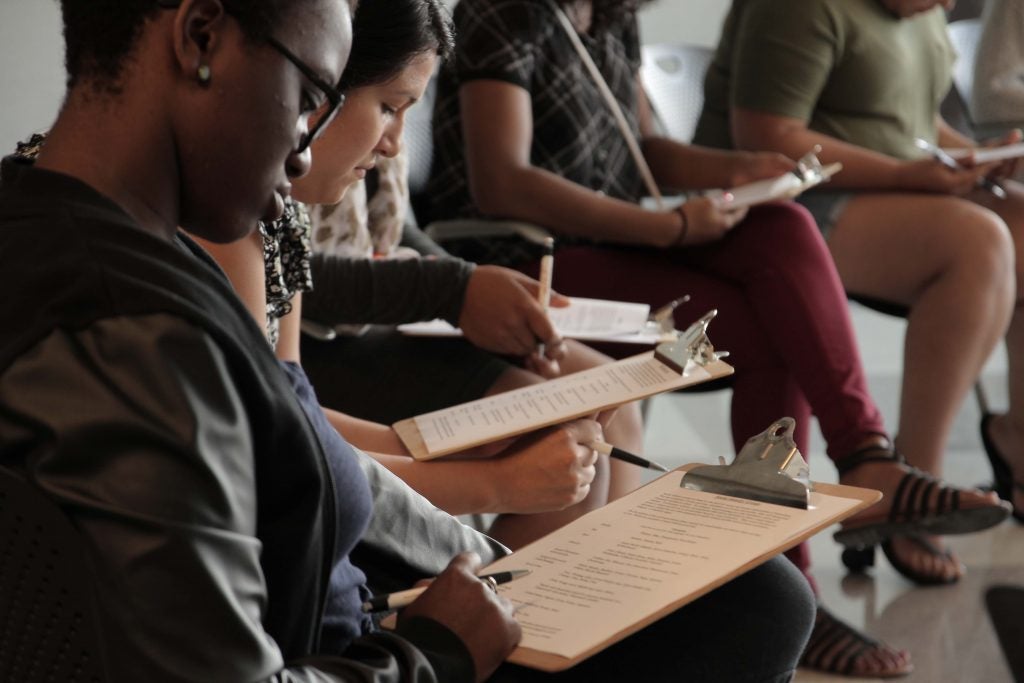In addition to preparing inclusive materials, instructors can prepare themselves with concepts that are likely to have an impact on students’ experience of the learning environment. The topics in this section are chosen to allow instructors to ground themselves in key ideas and to offer specific ways to prepare inclusive materials and classroom discussions.
![]()
This resource guide reviews potential "obstructions" instructors may have when it comes to creating an inclusive environment and suggestions on how to address them,
The following content and linked resources have been curated as a primer for instructors to better understand and attend to the ways privilege operates in the classroom.
The following content and linked resources are a primer to understanding content warnings (sometimes called “content notices” or “trigger warnings”).
This resource guide details practices for creating inclusive assignments and assessments.
This resource guide aims to provide instructors with both an overview of race, including its construction and historical context as well as ways to mobilize this information to have deeper interactions with others, particularly students in the classroom, around race and racism.
This resource offers samples of inclusive discussion guidelines. Setting up expectations for discussion with your students at the beginning of the term can be useful in creating an environment conducive to inclusivity, lively discussion, and classroom community building.
The guide offers reflective questions for instructors to explore and suggestions for appropriate ways and forums to work through the personal challenge of anti-oppressive work.
The following content and linked resources (found in the resource guide) have been curated as a primer for instructors to better meet the needs of transgender and non-binary students.
This collection of activities assists instructors in developing group cohesion, thoughtful engagement, and reflective responses to challenging material.
This resource guide provides strategies for responding to “hot moments”: the sudden eruption of tension and conflict in classroom discussion.
This guide provides resources for learning about implicit bias, including readings, videos, and activities, as well as recommendations for incorporating awareness of implicit bias into your teaching strategies.
This Inclusive Teaching resource offers sample language written in an inclusive manner that instructors may adopt and adapt for your own syllabus.
This resource provides language and resources that instructors can include in their syllabus that create a welcoming and supportive environment for students who have experienced gender-based violence and sexual abuse.
This resource guide details tips for creating accommodations for students with disabilities as well as general practices to consider when designing your course.
This resource guide is an inventory of 54 concrete strategies for building an inclusive class.
Overview During the Winter semester of 2023, the Equitable Teaching Website team conducted a series of focus groups with students across the University of Michigan Ann Arbor campus. The goal of this was to gain student perspectives and learn about their experience in inclusive classrooms to help inform the website.
This resource guide provides practical ways for instructors to get to know students as individuals, design inclusive course content and material, allow multiple ways to demonstrate learning, and integrate a variety of student engagement techniques (SETs).
This resource guide is an inventory of 30 concrete strategies for building an inclusive class with a GSI.
This page introduces the Question Formulation Technique (QFT), including background, goals, challenges, and ways to implement it in college classes.
This resource is designed to help instructors manage the challenges of difficult classroom dialogue, specifically the way some students block or divert dialogue as a defensive response to perspectives they find uncomfortable or challenging.
This resource details five general practices for building inclusivity in the classroom.
This resource explains stereotype threat, provides a few strategies for counteracting stereotype threat, and directs instructors toward further resources.
Overview Trauma-informed pedagogy is becoming increasingly more common as a result of multiple factors, including the national focus on racial inequality, gun violence, mental health, and the COVID-19 pandemic. With the COVID-19 pandemic specifically, a dramatic shift occurred for instructors when it was imperative that they adapt their curriculum and
These 14 types of questions model the kinds of questions a discussion facilitator might ask students in order to prompt deeper engagement with challenging topics.

























